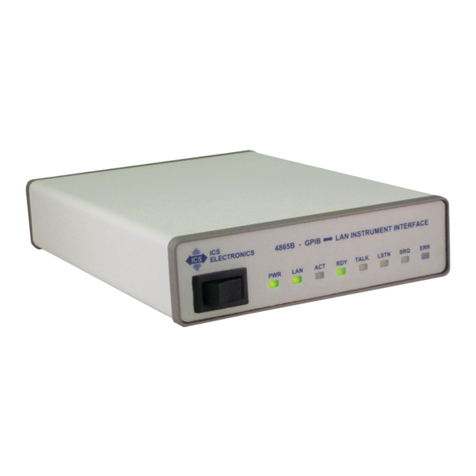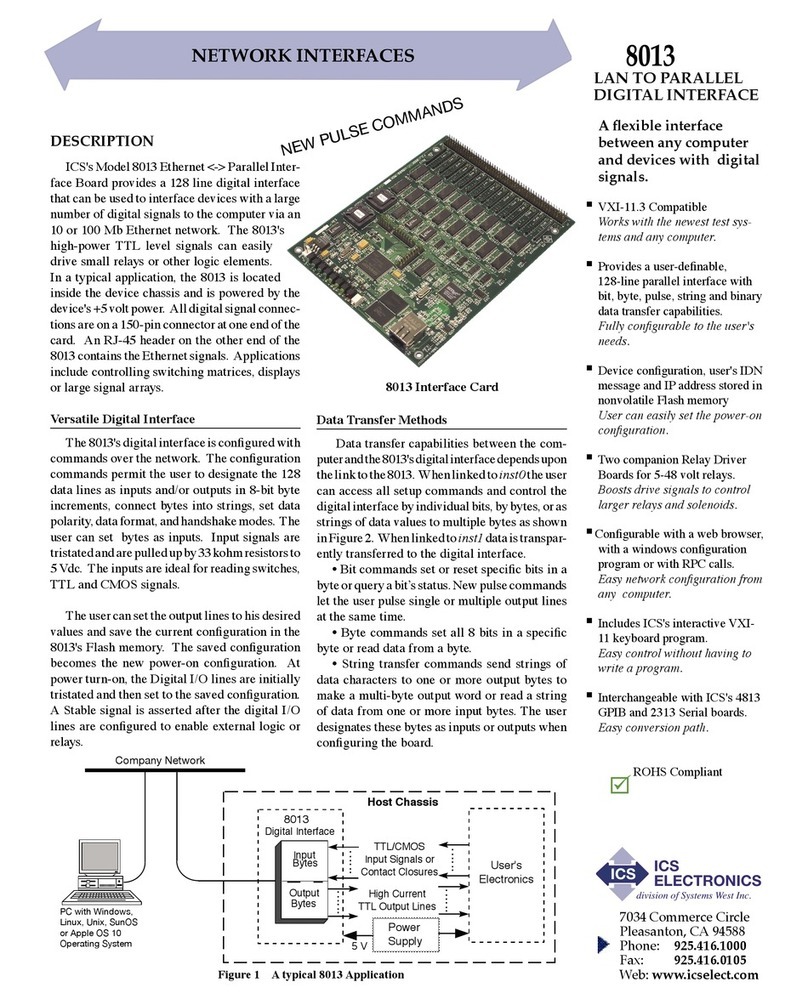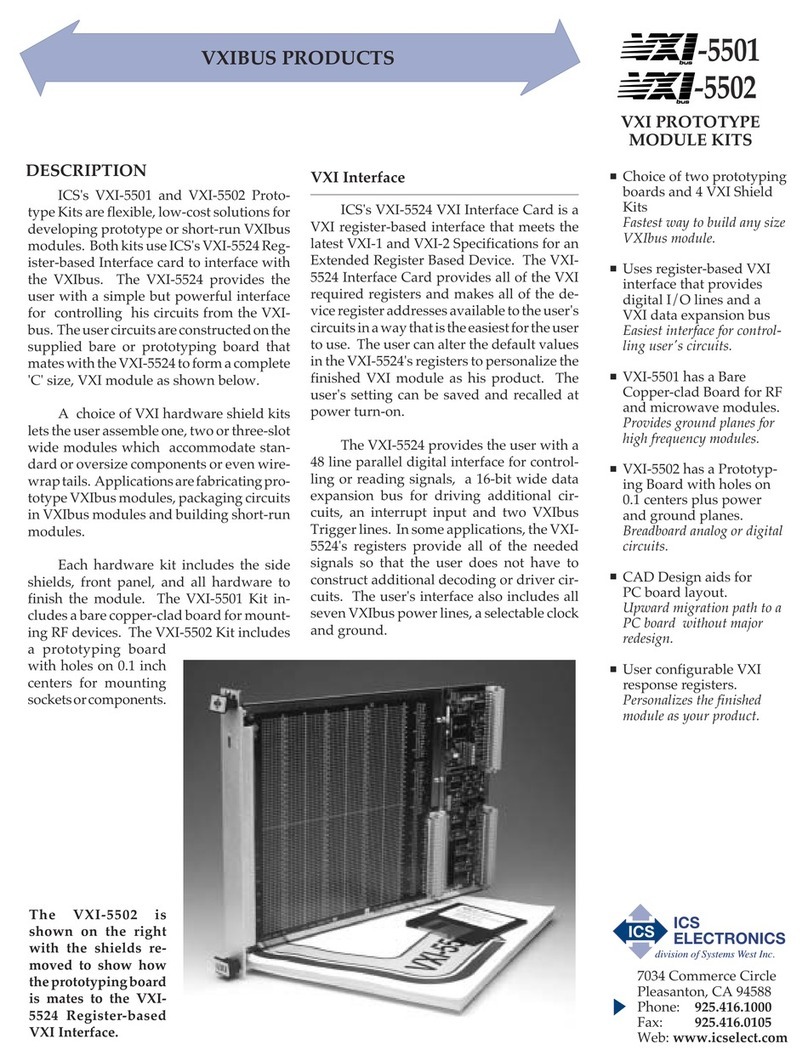
LIMITED WARRANTY
Within 12 months of delivery, ICS Electronics will repair or replace this product,
at our option, if any part is found to be defective in materials or workmanship (labor
is included). Return this product to ICS Electronics, or other designated repair
station, freight prepaid, for prompt repair or replacement. Contact ICS for a return
material authorization (RMA) number prior to returning the product for repair.
CERTIFICATION
ICS Electronics certifies that this product was carefully inspected and tested at the
factorypriortoshipmentandwasfoundtomeetallrequirementsofthespecification
under which it was furnished.
EMI/RFI WARNING
This equipment generates, uses, and can radiate radio frequency energy and, if not
installedandusedinaccordance withtheinstruction manual,maycause interference
to radio communications. The Models 4867 and 2367 have been tested and found
to comply with the limits for a Class A computing device pursuant to Subpart J of
Part 15 of the FCC Rules and to comply with the EEC Standards EN 55022 and EN
50082-1, which are designed to provide reasonable protection against such
interference when operated in a commercial environment. Operation of this
equipment in a residential area is likely to cause interference, in which case the user,
at his own expense, will be required to take whatever measures may be required to
correct the interference. The Models 4807 and 2307 have not been tested but may
be used in an assembly that will be tested prior to resale.
Certificate of Compliance reproduced in Figures 1-2 and 1-3.
TRADEMARKS
Thefollowing trademarksreferredtoin thismanualarethe propertyofthe following
companies:
HP is a trademark of Hewlett-Packard Corporation, Palo Alto, CA
ICS is a trademark of Systems West, Inc., San Jose, CA
REVISION HISTORY
CE Certificate added September 2009
© 2006-2015 ICS Electronics div Systems West, Inc.
































